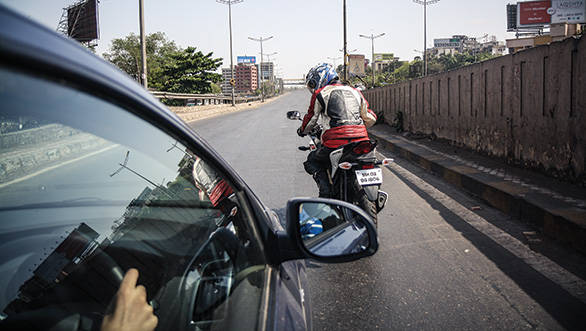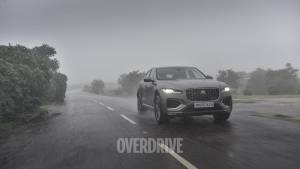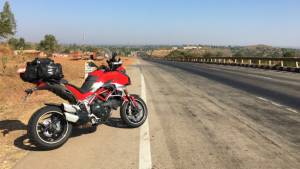Better riding: Safe overtaking
Overtaking is one of the more complex manoeuvres in motorcycle riding, primarily because of the consequences of getting it wrong. We have talked about it before but I've had a new realisation that makes it worthwhile to pay it another visit. To put it simply, overtaking has four phases. It begins with the identification of the gap you will use to pass the vehicle ahead. Phase two is when you pull out of your lane, accelerating to create a favourable difference in velocity. Phase three, you are for a short time parallel to the vehicle you are passing. This is when you are the most vulnerable and so you want to minimise the time spent here. This is when you're exposed to oncoming traffic and most likely to be in the other vehicle's blind spot. And finally, the focus of this riding tip, the final phase, when you re-enter your lane.
 You have to ensure that the gap between the vehicle you just passed and yourself is increasing as you merge back in
You have to ensure that the gap between the vehicle you just passed and yourself is increasing as you merge back in
I recently realised that I tend to feather the brakes when I'm in a car and a motorcycle pulls back into my lane ahead of me, if I don't see him accelerating away from me. And other drivers respond to the same event by honking out a warning or coming off the throttle or swerving to the other edge of their lane as a precaution or all three. This set me thinking about how I, merge back into my lane after an overtake on a bike. And the simplest of ways to understand this popped into my head.
For safety's sake, you have to do only one thing in the final phase of your overtake. You have to ensure that the gap between the vehicle you just passed and yourself is increasing as you merge back in. That is all there is to it. But it is easier to say this than do it because the two vehicles in question are not travelling parallel to each other, but on a converging course in direction terms.
Which means that the bigger the angle between your line (the imaginary line that marks the path your tyres will take to return to your lane) and the other vehicle's line (the imaginary line marking his progress in his lane), the harder you have to be accelerating back into your lane. Or conversely, the more time you take to merge back in (not a good thing to be honest), the lower the velocity difference required to ensure that the space between you is increasing as you merge.
This never works if the vehicle being passed and you are travelling at the same speed, or if you are slower. That means you have to still be going faster and/or accelerating harder even as you begin to merge back in. And that you can merge back in on a closed or trailing throttle (decelerating gently) only if you either have a significant speed advantage to begin with, or have stayed out in the oncoming lane for much longer. Neither are good ideas, right? The sole exception is when there is another slow moving vehicle ahead that you have to account for and make a separate overtaking strategy for.
Related Stories
Top Stories
Latest Videos
Most Popular
- Budget Sportbike Showdown: Kawasaki Ninja 500 vs Aprilia RS 457 vs Yamaha YZF-R3
- Mumbai-Pune Expressway speed restrictions updated
- 2014 Triumph Daytona 675 vs 2024 Kawasaki ZX6R - A Decade of Evolution in Supersport Motorcycles
- 2024 Hyundai Creta vs Toyota Urban Cruiser Hyryder vs Skoda Kushaq comparison review - the hype is real?
- Nissan Magnite EZ-Shift review - is the AMT any good?













